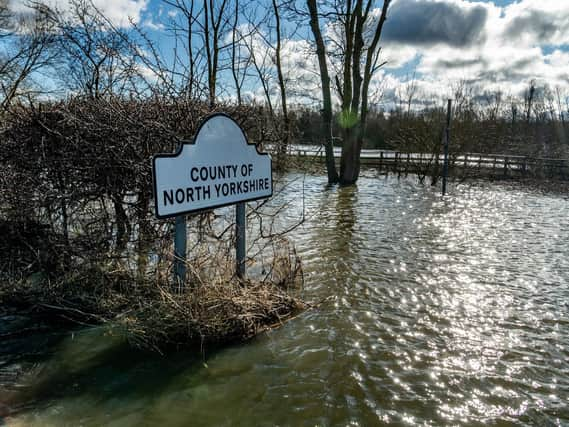The Environment Agency has explained why the Aire washlands didn't stop flooding in Yorkshire


Adam Bayliss has written an extensive blog post on the Environment Agency's website about the role of washlands and why they are not infallible.
Mr Bayliss, who is an active Twitter user, has been documenting his team's efforts to pump water from the Aire basin on social media, and has been bombarded with questions about their function.
Advertisement
Hide AdAdvertisement
Hide AdWashlands have been around since the Viking period, when marshy areas were known as 'ings' - a Norse word. They were deliberately not built on so that water from adjacent rivers could be stored naturally during times of flood. Many washlands are now designated as wetland nature reserves.
More recently, these ancient floodplains have been enhanced by artificial water control measures so that levels of flooding can be monitored.
The River Aire has 38 washlands with a capacity to store a 33 million cubic metres of water.
"The washlands are an essential part of how we manage flood risk on the River Aire. In simple terms, when the river levels are high, water enters the washlands and leaves as the river levels fall. Normally, these drain under gravity and with the help of pumping stations, but sometimes we need to help with additional mobile pumps.
Advertisement
Hide AdAdvertisement
Hide Ad"However, on the Lower Aire, it’s a little more complicated than that. As the washlands are at the bottom of the catchment they are also affected by the tide. When there is a high tide, river levels increase and the washlands fill more quickly. Once the washlands have filled they generally drain naturally to the sea, but during high tides this process is either much slower or cannot happen at all. So a combination of high river flows coming down the catchment following heavy rainfall along with high tides means the washlands cannot drain as they would normally and stay full.
"We have seen this happen over the last few weeks, when we experienced twice the average monthly rainfall during February. Then we had the combination of very high river levels plus high tides which led to the washlands filling quickly and natural drainage back into the river being much slower than usual.
"The washlands did do what they are supposed to do in reducing flood risk and preventing flooding to around 2,600 properties. Unfortunately, the sheer volume of water meant they reached capacity and overspilled, flooding some properties in Snaith, East Cowick and Hirst Courtney. My colleagues were out in these areas deploying sandbags, erecting temporary defences and monitoring levels.
"My main role in the recent flooding has been supervising our extensive pumping operation to empty the washlands as quickly and as safely as possible. It’s important to do this to create capacity in case of further rainfall. Creating capacity is vital, but so too is supporting local communities who have been affected by flooding and we’ve used additional pumps to reduce water levels and aid recovery.
Advertisement
Hide AdAdvertisement
Hide Ad"It’s also really important that we have the right conditions to pump. If we pump water into the river when the tide is high, that just increases the level in the river. Pumping too quickly can also damage the embankments. That is why we have a pumping plan to ensure we pump at the best locations and times.
"At the height of the recent flooding along the Lower Aire, we had 43 pumps pumping 13,000 litres every second. Whilst this number of pumps are able to pump around 19 Olympic swimming pools of water every hour, gravity is still the quickest, cheapest and lowest-carbon way for the water levels to reduce, especially with the huge volumes involved.
"We can never entirely eliminate the threat of flooding and there are situations where flood defences cannot cope with the levels of water we’re experiencing. It’s really important therefore that people sign up to our free flood warning service and have flood risk plans in place.
"My colleagues and I live and work in Yorkshire and are committed and passionate about what we do and the importance of reducing flood risk. We’ve seen first-hand how devastating it can be. We’ll continue to work 24 hours a day doing all we can to prevent further flooding, supporting and working with local communities and partners and helping people recover."
